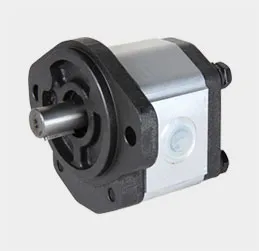green sand metal casting
Green Sand Metal Casting An Eco-Friendly Approach to Metal Fabrication
Green sand metal casting is a traditional foundry process that has stood the test of time due to its versatility, cost-effectiveness, and relatively low environmental impact. This method is widely used across various industries for producing metal components with intricate designs. Understanding the principles and benefits of green sand casting can help both manufacturers and consumers appreciate this age-old technique.
What is Green Sand Casting?
Green sand casting involves creating a mold using a mixture of sand, clay, and water. The term green refers to the moisture content in the sand rather than the color. The basic components include
- Silica Sand This is the primary ingredient, providing the mold with strength and stability. - Clay Typically bentonite clay is used, which acts as a binding agent that helps hold the sand together. - Water This is added to activate the clay and enhance the mold's potential for holding its shape.
To create the mold, the sand mixture is packed around a pattern, which is an exact replica of the desired metal part. Once the pattern is removed, the resulting cavity is filled with molten metal, allowing it to cool and solidify into the final product. The mold can be reused multiple times, making this process environmentally friendly and economical.
Advantages of Green Sand Casting
1. Cost-Effectiveness One of the primary benefits of green sand casting is its low material cost. The raw materials (sand, clay, and water) are abundant and inexpensive, making it an accessible option for small-scale and large-scale production.
2. Environmental Impact Green sand is a sustainable choice because it can be reused multiple times. Most foundries recycle their sand after its initial use, reducing waste substantially. Furthermore, the clay used in the process is usually biodegradable, minimizing pollution.
green sand metal casting

3. Versatility This method can accommodate a wide range of metals, including iron, aluminum, and copper alloys. It is suitable for producing intricate designs, including complex shapes that would be challenging to achieve with other methods.
4. Good Surface Finish Green sand casting often results in parts with a smoother surface finish compared to other sand casting techniques. This can reduce the need for additional machining, saving both time and resources.
5. Rapid Production The simple setup required for green sand casting allows foundries to quickly produce molds, making it ideal for small to medium production runs. This agility is especially beneficial in industries that require quick prototyping or fast delivery.
Challenges of Green Sand Casting
While green sand casting has many advantages, it also presents some challenges. The most notable is that achieving dimensional accuracy can be difficult. Variations in the moisture content or the composition of the sand can lead to discrepancies in the final product. Additionally, the process is less suitable for producing extremely complex geometries or very large components compared to advanced casting methods such as investment casting or die casting.
Future of Green Sand Casting
The future of green sand casting looks promising as new technologies and practices emerge to enhance its effectiveness. Innovations in materials, such as the development of synthetic sands, aim to improve mold quality and reduce the need for additives. Furthermore, advancements in simulation software are helping foundries predict outcomes more accurately, leading to improved mold designs and reduced scrap rates.
In conclusion, green sand metal casting remains a vital technique in the foundry industry, combining age-old practices with modern advancements to meet contemporary manufacturing demands. Its cost-effectiveness, eco-friendly attributes, and versatility make it an invaluable process for producing metal components. As industries increasingly focus on sustainability and efficiency, green sand casting is likely to remain a favored choice for metal fabrication for years to come.
-
Custom Steel Sand Casting Services Precision & Durability GuaranteedNewsApr.29,2025
-
Arise Precision Casting Custom Metal Casting Solutions & ServicesNewsApr.29,2025
-
Sand Casting Guide Definition, Process & High-Quality Sand SuppliesNewsApr.28,2025
-
Premium Alloy Die Casting Manufacturer Aluminium & Zinc SolutionsNewsApr.28,2025
-
Precision Aluminum Die Casting Custom Solutions & Fast TurnaroundNewsApr.27,2025
-
Precision Complex Sand Casting Solutions Durable & Custom DesignsNewsApr.27,2025















